Friday, May 28 visit to Amgen - Our last meeting of the day, but certainly one that sparked an interesting discussion. Ms. Dominique Debiais, Corporate Affairs Director, was kind enough to take time out of her incredibly busy day. She had received news that day that Prolia (denosumab) was approved for sale in the EU. Prolia is for patients that have bone loss conditions and was proven to increase bone mineral density. Our discussion included background on Amgen and the challenges the company faces, as well as information on the French health care system and lastly some information on drug pricing.
Background on Amgen
Amgen is a leading biotechnology company that was founded in 1980. EPOGen was one of the first durgs the company produced in 1983, it is used to treat anemia by increasing the production of red blood cells. The company has eight products on the market (Prolia is the ninth) and has been very successful. The challenges that Amgen faces are as follows:
- extremely high R&D costs, it takes between $600 million and $1 billion to bring a new drug to the market (this includes the cost of failed drugs).
- the drugs that Amgen manufactures are large molecules which are complex, unstable and can be difficult to duplicate (this means that good manufacturing practices are very important to be able to replicate the product).
- 90% of projects never reach the market.
- strategic location selection for conducting clinical trials.
- threat of generic brands entering the market.
French Health Care System
France has a social security system which includes retirement, unemployment and healthcare. The system was created in 1946, however it has amounted to a deficit of approximately 9 billion euro. Despite the deficit, Ms. Debiais believes the coverage provided by the French government is wonderful. The care is free and the outcomes are very good in comparison with other countries. Aside from the debt, the other draw back is that this system does not provide much preventative care, however she believes it is still very efficient. Coverage seemlessly continues within the EU member states when traveling.
This part of the discussion led to interesting questions about the care within the US. Based on Ms. Debiais' slides, France spent ~ 10% of GDP on healthcare in 2003, while the US spent ~ 15%. How can the percentage of spending be so large when the quality of care in the US is not as efficient? Has the recent healthcare reform really changed the system or is it just contributing to a higher percentage spent on healthcare? One side of the argument is that universal coverage in the US did not address the issue at hand which is how to fix the major inefficiencies within the healthcare system. What is the role of insurance companies and how can a single payer help the system?
Drug Pricing
The EU law prohibits direct to consumer marketing for prescription drugs and does a good job controlling this issue. The over all price of drugs is much lower in the EU than in the US because of the way the healthcare system is set up. In France the price is very transparent.
Unfortunately we ran out of time and were unable to obtain more detail on the pricing.
Sunday, May 30, 2010
Thursday, May 27, 2010
The European Commission
Today's visit to the European Commission started with a walk around the Parliament Building. As we walked Professor Brunel gave an in-depth explanation of the roles of political parties in the EU system. His extensive knowledge of the complex governing structure gave us a good foundation for the rest of the day's learning.
Our first meeting was with a Dusan Sandor, a Slovak diplomat living in Brussels. Dusan explained the functional role of each EU institution. He also spoke briefly about the EU's founding fathers, and his belief that in the future they will be well-known historical figures in Europe, much like Thomas Jefferson or George Washington in the U.S.
Some of the most interesting insights Dusan provided were about how the balance of power has shifted since the founding of the EU. In the beginning, he explained, the council was significantly more powerful than the parliament or commission but the other two gradually gained influence and now their is a much more equitable balance.
Finally, Dusan illustrated how much of an impact the EU presence has had on the city of Brussels, citing statistics such as 25,000 EU employees in Brussels (plus their families) and 10-30,000 lobbyists at any given time.
Our second dpeaker, an Austrian, specialized in EU / U.S. trade relations. She presented some fascinating examples of how closely integrated and interdependent our economies are. For example, she pointed out that the two economies absorb 20% of eachothers product exports and 30% of eachothers service exports. With this in mind, she illustrated the difficulties that regulatory difference between the Eu and U.S. create, and why it is important for us to work cooperatively to establish standardized regulations for future products. She also explained how greater cooperation will help keep our trade relationships as dominant forces, as we face greater competition from the emerging BRIC nations. Towards the end of the discussion we touched briefly on the WTO's interaction with the EU, and professor Brunal added the valuable insight that the EU member states are represented by one common voice in their interactions with the WTO.
Our final speaker was an expert in EU competition policy. He explained how the focus of his organization has shifted from legal competencies to more economic ones. His particular specialization is in anti-trust and merger controls and the extent of penalties that the EU can impose on firms (including fines and behavioral mandates, but no criminal charges). As part of this discussion, Professor Brunel astoutely observed that the fines imposed by the EU can be monumental even when compared with the total EU budget (of which they make up 2-3%.
We certainly learned a lot before getting on the bus to Paris, and the long ride allowed us to continue our discussion on the successes and challenges of the Commission and EU as a whole. Professor Brunel was nice enough to entertain our many questions and provide detailed answers.
Our first meeting was with a Dusan Sandor, a Slovak diplomat living in Brussels. Dusan explained the functional role of each EU institution. He also spoke briefly about the EU's founding fathers, and his belief that in the future they will be well-known historical figures in Europe, much like Thomas Jefferson or George Washington in the U.S.
Some of the most interesting insights Dusan provided were about how the balance of power has shifted since the founding of the EU. In the beginning, he explained, the council was significantly more powerful than the parliament or commission but the other two gradually gained influence and now their is a much more equitable balance.
Finally, Dusan illustrated how much of an impact the EU presence has had on the city of Brussels, citing statistics such as 25,000 EU employees in Brussels (plus their families) and 10-30,000 lobbyists at any given time.
Our second dpeaker, an Austrian, specialized in EU / U.S. trade relations. She presented some fascinating examples of how closely integrated and interdependent our economies are. For example, she pointed out that the two economies absorb 20% of eachothers product exports and 30% of eachothers service exports. With this in mind, she illustrated the difficulties that regulatory difference between the Eu and U.S. create, and why it is important for us to work cooperatively to establish standardized regulations for future products. She also explained how greater cooperation will help keep our trade relationships as dominant forces, as we face greater competition from the emerging BRIC nations. Towards the end of the discussion we touched briefly on the WTO's interaction with the EU, and professor Brunal added the valuable insight that the EU member states are represented by one common voice in their interactions with the WTO.
Our final speaker was an expert in EU competition policy. He explained how the focus of his organization has shifted from legal competencies to more economic ones. His particular specialization is in anti-trust and merger controls and the extent of penalties that the EU can impose on firms (including fines and behavioral mandates, but no criminal charges). As part of this discussion, Professor Brunel astoutely observed that the fines imposed by the EU can be monumental even when compared with the total EU budget (of which they make up 2-3%.
We certainly learned a lot before getting on the bus to Paris, and the long ride allowed us to continue our discussion on the successes and challenges of the Commission and EU as a whole. Professor Brunel was nice enough to entertain our many questions and provide detailed answers.
Wednesday, May 26, 2010
"Lobbying" in the EU
Today we are glad to have a speaker, Mr. Linus Turner, from Brunswick Group to speaking around “lobbying” in the EU. Lobbying is “the effort to influence government public decision making toward favored outcomes on subjects deemed relevant to those directing or funding the lobbying effort.”
 This is quite an interesting topic to me because we never have this concept in Taiwan. Sometimes trying to persuade or to cooperate politicians to pass regulations in favor of one’s interests would be treated as dirty or not ethical. As Mr. Turner mentioned, lobbying is regulated and often seen in the US and UK, but not in any other counties, including those EU Member States, which makes lobbying a new merging concept in EU.
This is quite an interesting topic to me because we never have this concept in Taiwan. Sometimes trying to persuade or to cooperate politicians to pass regulations in favor of one’s interests would be treated as dirty or not ethical. As Mr. Turner mentioned, lobbying is regulated and often seen in the US and UK, but not in any other counties, including those EU Member States, which makes lobbying a new merging concept in EU.
From the business perspective, lobbying can important as, defensively, they need lobbying This is quite an interesting topic to me because we never have this concept in Taiwan. Sometimes trying to persuade or to cooperate politicians to pass regulations in favor of one’s interests would be treated as dirty or not ethical. As Mr. Turner mentioned, lobbying is regulated and often seen in the US and UK, but not in any other counties, including those EU Member States, which makes lobbying a new merging concept in EU.
This is quite an interesting topic to me because we never have this concept in Taiwan. Sometimes trying to persuade or to cooperate politicians to pass regulations in favor of one’s interests would be treated as dirty or not ethical. As Mr. Turner mentioned, lobbying is regulated and often seen in the US and UK, but not in any other counties, including those EU Member States, which makes lobbying a new merging concept in EU.1. to protect the company’s license or bottom line to operate.
2. to ensure fair competition across markets.
or, offensively,
3. to improve corporate image and/or pre-empt regulatory action
4. to create the perfect regulatory environment for a product or a service.
As a British Politician said,
“If I enact a piece of act that has negative effect to your business and I don’t know, that’s not my fault, it’s yours.”
And considering the size of the EU market and the power of the regulation, it is quite important for companies to pay attention and even actively participate the lobbying activities.
The presentation was going smooth with vivid examples and great discussions between classmates and speakers. One good thing about this trip is that you get to see different topics “on-site”, so I believe I had quite a good lesson today. :)
Atomium and Mini-Europe


Today is Wednesday, May 26, 2010. Our destination in the morning was Atomium and Mini-Europe. Atomium, one of the landmark in Belgium, was built for the Brussels World Expo in 1958. It symbolizes an iron crystal, magnified 165 billion times. The nine large spheres, connected by 20 tubes, are supported by three enormous pillars and dominate with a height of 102 metres the entire Heysel plateau. Nowadays, Atomium still houses for both a permanent exhibition dedicated to Expo 58 and any temporary exhibitions. For Mini-Europe, it is located next to the Atomium, within 5 minutes walk. Mini-Europe is a park filled with tourist attraction models of EU, building down to the finest detail to a scale of 1:25 and zoning by countries.
The day started at 9.30 and we arrived Atomium around 10 am. I was impressed with its shape when taking a closer look to the building and seeing that glass windows look so blending to the sphere. We began our exploration by taking the elevator to the top floor. In the elevator, if we look at the top, we can see the naked structure of the building, which is very fascinating. The view over the top floor was so nice and we could see the 360 angel of Brussels but sadly, we didn’t get the clear blue sky. Then, we got down to the same the ground floor and took the long and steep escalator to another sphere, which is hosted for the “Be welcome” Exhibition, showing about the immigration to Belgium. The show is pretty interesting. It’s funny that I even saw one story of the Thai immigrant, who came and opened Thai restaurant in Brussels. In shorts, we took a lot of photos and had a good time together there.
After spending enough time at Atomium, we all walked to Mini-Europe among rain, why did it have to be this time?, I kept questioning to myself why not in the afternoon :P...Anyway, once after we got in, we as a group took a photo together with the orange turtle holding EU flag. The first model we walked pass by was the EU building, it’s very modern and huge but what I like most there is the Grand Place, the old central square of the Brussels, because it looks so delicate and very similar to what we saw during city walk last night. Everyone had a great time there, taking a photo, despite the rain!. At the same time, Prof. Brunel did a good job being our tour guide leader, explaining and identifying us the outstanding places in Europe. This walk amazed me in the way that there are some countries or places in Europe that I never heard of the name before. Once I watched the time again, it was almost 12.00 pm!, and we had to head back to the city and have lunch before our first meeting of the day. Bye Bye Relaxing time, see you again soon after 6!!
A day in Brussels
So hello readers of this blog, my name is Elliott. So I thought I'd share a bit of the day that we had today along with some of the pictures that were taken today.
So far on the 2 days since we've started this journey of ours through the companies and countries of Europe we start off with the breakfast of the hotel. Today we got a bit of break compared to yesterday in that we were able to sleep in, and didn't have our first meetings with the companies of the day until the afternoon. If only the weather cooperated and allowed us to enjoy Belgium with the little time we have (tomorrow we depart for Paris after our visit to the European Council).
So in the pouring rain we went to the Atomium, and Mini-Europe. The Atomium is the free-standing structure that was built for the 1958 Brussels World Expo (World's Fair) similar to that of the Eiffel Tower which was built for the 1889 World Expo. The Atomium was modeled after a molecule of Iron Crystal and is quite a site to see, and fairly massive.
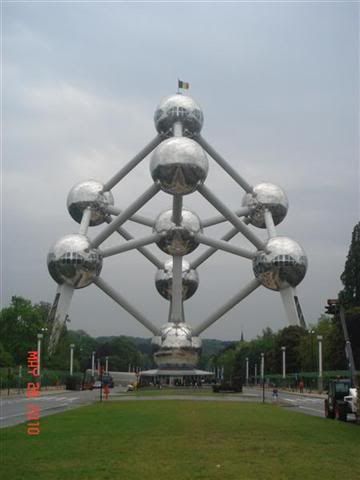
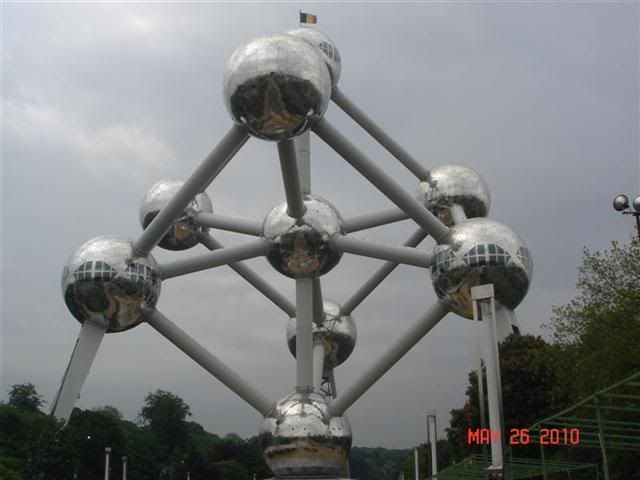
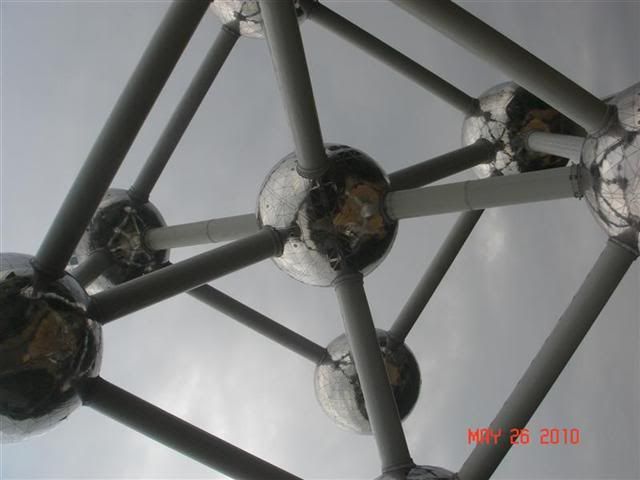
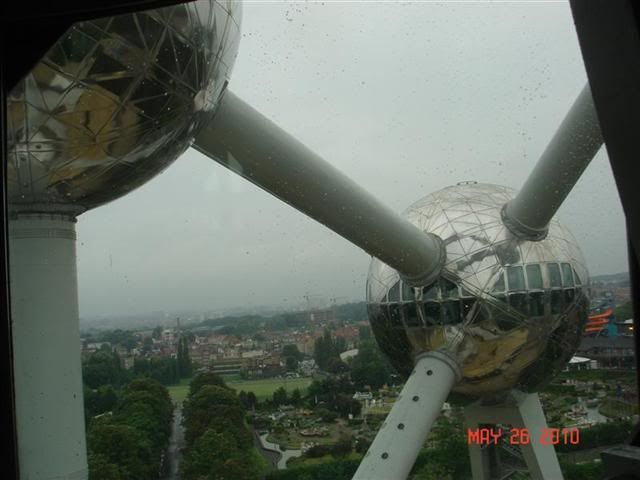
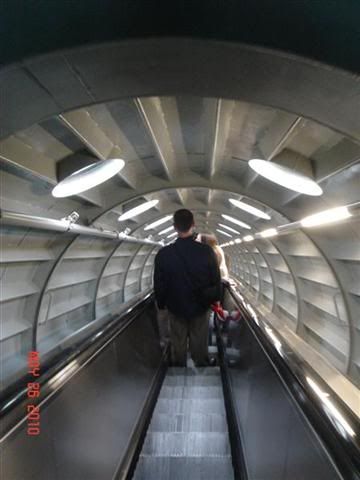
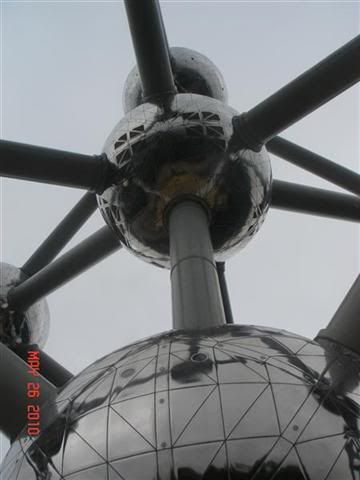
(Please Click on the thumbnails for a larger image)
After we went to the Atomium we visited Mini-Europe and had fun going around looking at the miniture versions of the landmarks of Europe, apparently this is the favorite place of one of our speakers today Mr. Linus Turner.
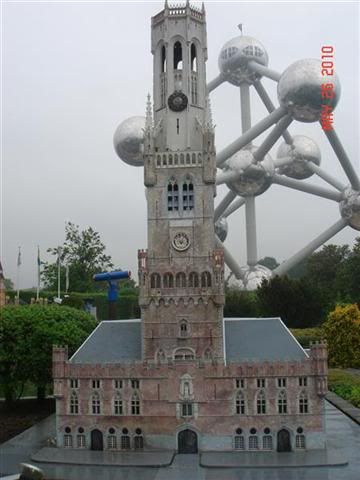
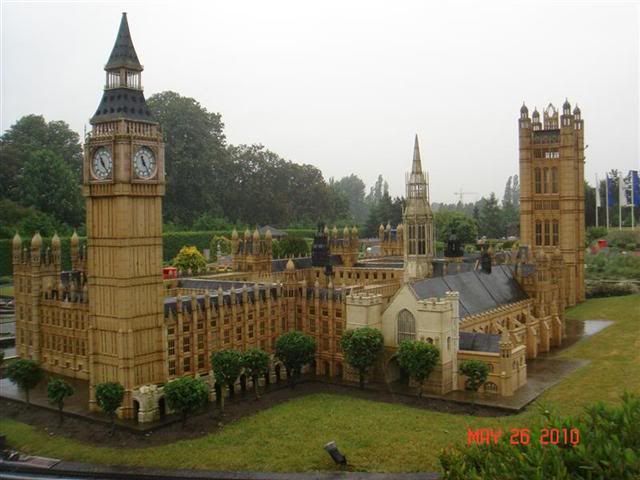
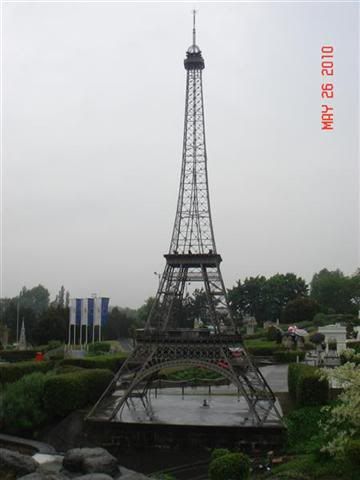
We rode the bus afterwards towards our meeting site, but before that we had our Lunch. It was a great deal, we had the Plate of the Day (Plat du Jour). It was a much needed warm meal, especially since we didn't not want to walk far in the cold, and heavy rain that we encountered after we got off the bus.
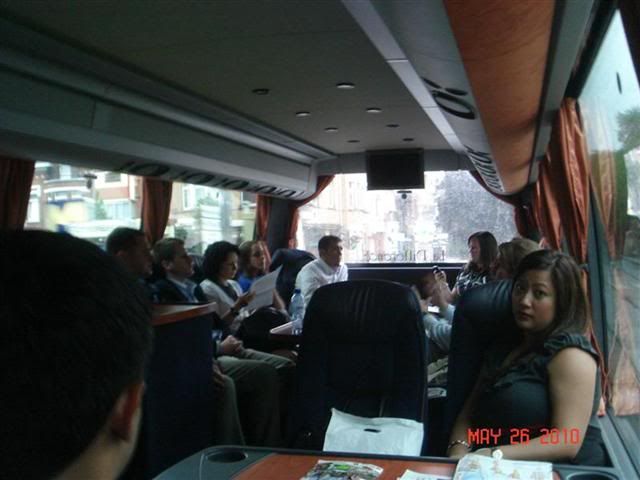
Mr. Turner was the speaker for the Brunswick group and explained to us about the lobbying system here in Europe within the European Union. Afterwards we met with Mr. Oliver Brissaud from Volkswagen Group Services.
Mr. Brissaud's presentation went into three topics, the first about Volkswagen Group Services, then about Harmonizing the EU's currencies, and finally about Derivitives. I personally found that his presentation was very amusing and that I learned a lot especially about VGS and how they operate within VW Auto Group. His explanations were very lively and animated, and allowed us to easily learn about what he was saying and trying to explain to us.
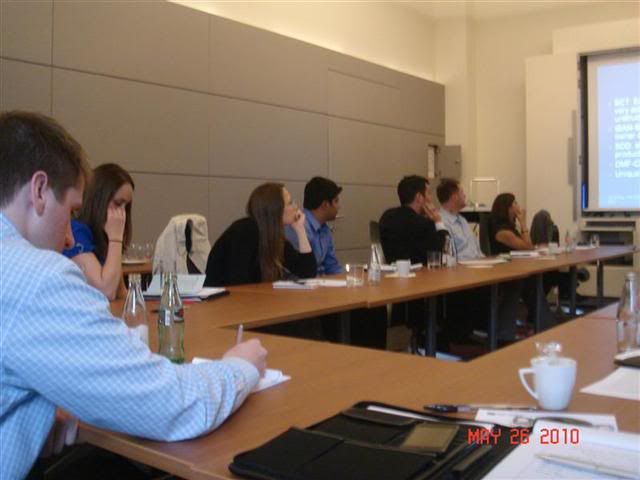
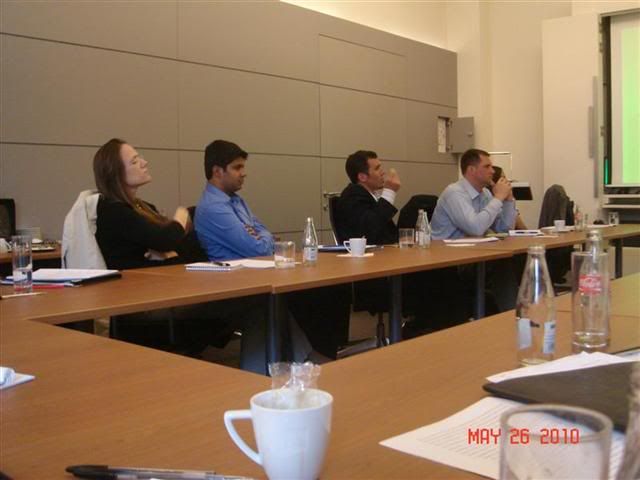
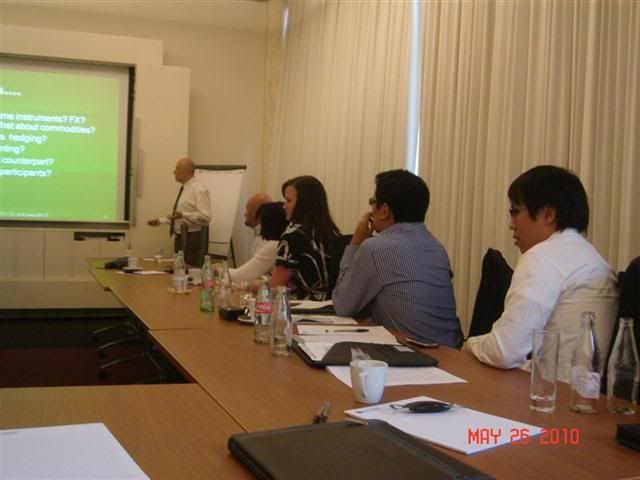
After our meeting, we were dropped off to the hotel, and a couple of classmates and I took some time to quickly explore the rest of Brussels, we were able to walk around the heart of the city within 2 hours, but this is another entry for another day. Needless to say it's been a busy day and a busy past few days, and sleep is needed to continue, but we continue to have fun, work hard, and learn a lot about Europe.
So far on the 2 days since we've started this journey of ours through the companies and countries of Europe we start off with the breakfast of the hotel. Today we got a bit of break compared to yesterday in that we were able to sleep in, and didn't have our first meetings with the companies of the day until the afternoon. If only the weather cooperated and allowed us to enjoy Belgium with the little time we have (tomorrow we depart for Paris after our visit to the European Council).
So in the pouring rain we went to the Atomium, and Mini-Europe. The Atomium is the free-standing structure that was built for the 1958 Brussels World Expo (World's Fair) similar to that of the Eiffel Tower which was built for the 1889 World Expo. The Atomium was modeled after a molecule of Iron Crystal and is quite a site to see, and fairly massive.






(Please Click on the thumbnails for a larger image)
After we went to the Atomium we visited Mini-Europe and had fun going around looking at the miniture versions of the landmarks of Europe, apparently this is the favorite place of one of our speakers today Mr. Linus Turner.



We rode the bus afterwards towards our meeting site, but before that we had our Lunch. It was a great deal, we had the Plate of the Day (Plat du Jour). It was a much needed warm meal, especially since we didn't not want to walk far in the cold, and heavy rain that we encountered after we got off the bus.

Mr. Turner was the speaker for the Brunswick group and explained to us about the lobbying system here in Europe within the European Union. Afterwards we met with Mr. Oliver Brissaud from Volkswagen Group Services.
Mr. Brissaud's presentation went into three topics, the first about Volkswagen Group Services, then about Harmonizing the EU's currencies, and finally about Derivitives. I personally found that his presentation was very amusing and that I learned a lot especially about VGS and how they operate within VW Auto Group. His explanations were very lively and animated, and allowed us to easily learn about what he was saying and trying to explain to us.



After our meeting, we were dropped off to the hotel, and a couple of classmates and I took some time to quickly explore the rest of Brussels, we were able to walk around the heart of the city within 2 hours, but this is another entry for another day. Needless to say it's been a busy day and a busy past few days, and sleep is needed to continue, but we continue to have fun, work hard, and learn a lot about Europe.
Friday, May 14, 2010
Hungry in Paris?
A good friend who lived in Paris suggested the following two places...
www.lepotdeterre.com One of their favorites..."great prices, in best area for non-touristy restaurants... off of RUE MOUFFETARD.
&
www.lecoupechou.com
www.lepotdeterre.com One of their favorites..."great prices, in best area for non-touristy restaurants... off of RUE MOUFFETARD.
&
www.lecoupechou.com
Subscribe to:
Posts (Atom)
